Figure (a) and (b) shows the field lines of a positive and negative point charge respectively.
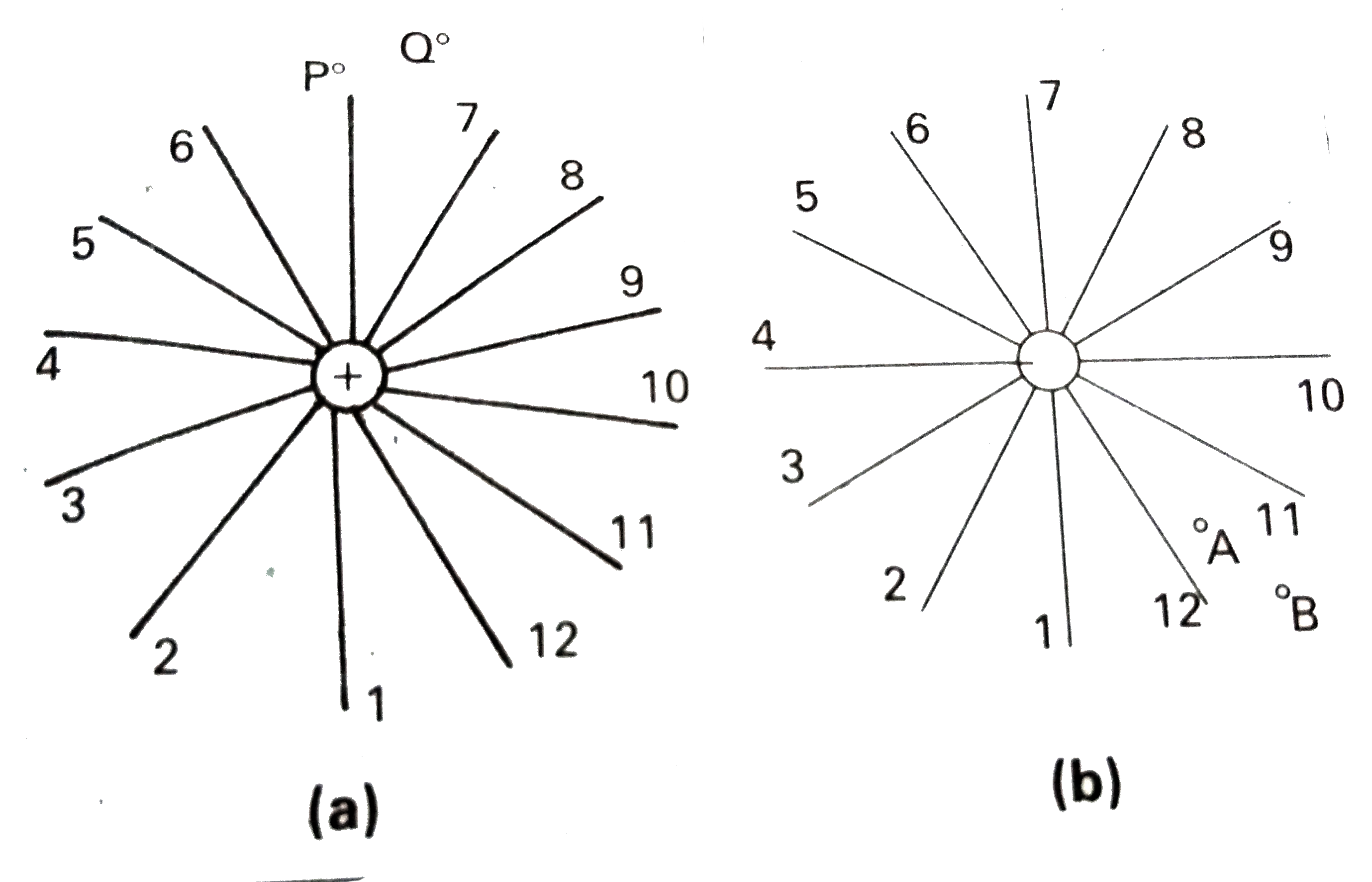
Give the signs of the potential difference Vp−VQ,VB−VA.
As V∝1r,VP>VQ. Thus, (Vp−VQ) is positive. Also ,VB is less negative than VA. Thus , VB>VAor(VB−VA) is positive.
Topper's Solved these Questions
- ELECTROSTATIC POTENTIAL AND CAPACITANCEBOOK - VIKRAM PUBLICATION ( ANDHRA PUBLICATION)CHAPTER - ELECTROSTATIC POTENTIAL AND CAPACITANCEEXERCISE - Important Questions
3 Videos
- ELECTROSTATIC POTENTIAL AND CAPACITANCEBOOK - VIKRAM PUBLICATION ( ANDHRA PUBLICATION)CHAPTER - ELECTROSTATIC POTENTIAL AND CAPACITANCEEXERCISE - SAQs
4 Videos
- ELECTROSTATIC POTENTIAL AND CAPACITANCEBOOK - VIKRAM PUBLICATION ( ANDHRA PUBLICATION)CHAPTER - ELECTROSTATIC POTENTIAL AND CAPACITANCEEXERCISE - Additional Excercise
36 Videos
- ELECTROMAGNETIC WAVEBOOK - VIKRAM PUBLICATION ( ANDHRA PUBLICATION)CHAPTER - ELECTROMAGNETIC WAVEEXERCISE - ADDITIONAL EXERCISES
19 Videos
- MAGNETISM AND MATTERBOOK - VIKRAM PUBLICATION ( ANDHRA PUBLICATION)CHAPTER - MAGNETISM AND MATTEREXERCISE - Additional Exercises
19 Videos
Similar Questions
Figure (a) and (b) show the field lines of a positive and negative point charge respectively.
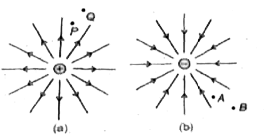
(a) Give the signs of the potential difference . Vp−VQ,VB−VA
(b) Give the sign of the potential energy difference if a small negative charge is moved from points Q to P from point A to B.
(c) Give the sign of the work done by the field in moving a small positive charge from Q to P.
( d) Give the sign of the work done by the external agency in moving a samall negative charge from B to A .
(e ) Does the kinetic energy of a small negative charge increase or decrease in going from B to A ?
View SolutionFigures (a) and (b) show the field lines of a positive and negative point charge respectively.
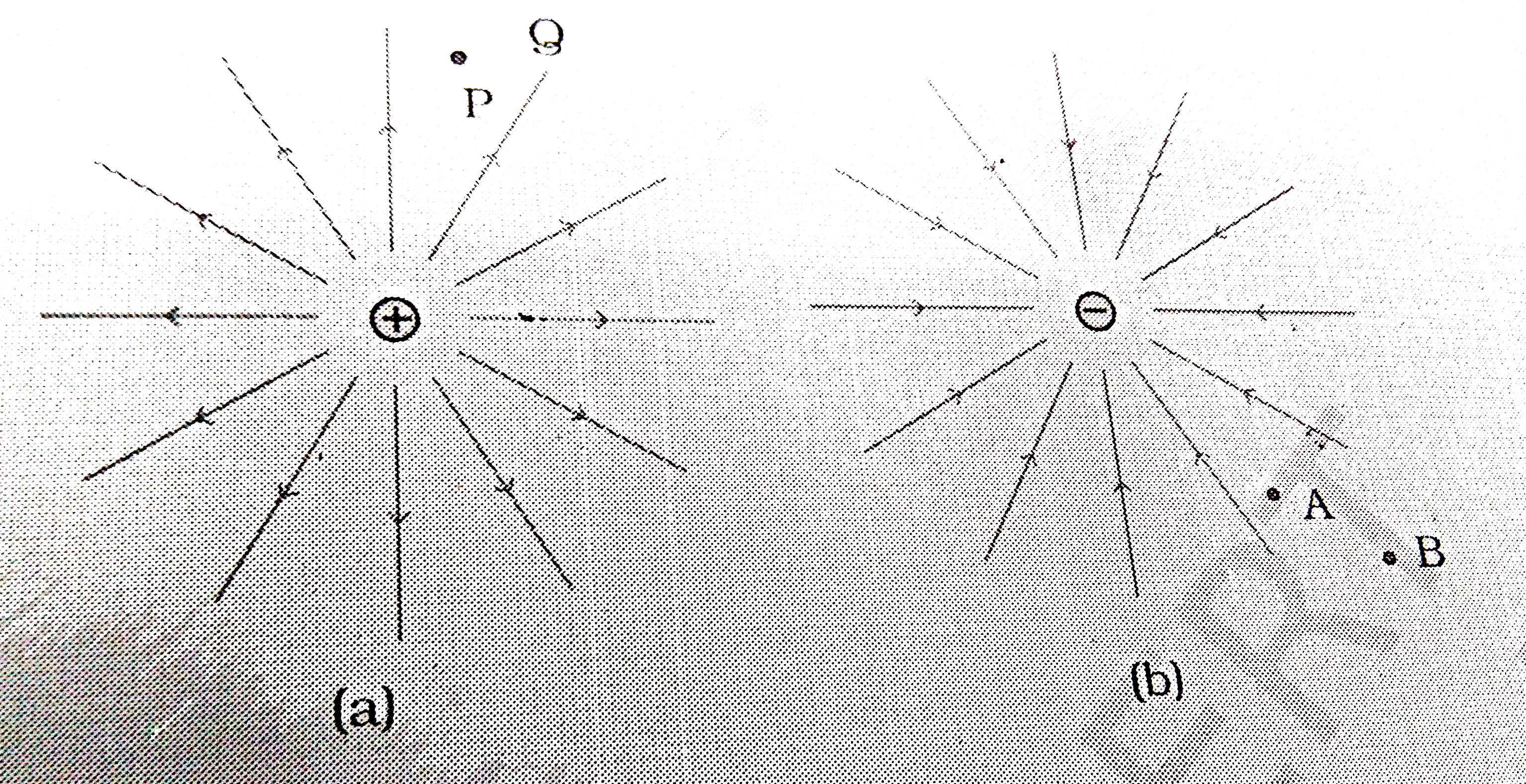
(a) Give the signs of the potential difference VP−VQ,VB−VA.
(b) Give the sign of the potential energy difference of a small negative charge between the points Q and P, A and B.
(c) Give the sign of the work done by the field in moving a small positive charge from Q to P.
(d) Give the sign of the work done by the external agency in moving a small negative charge from B to A.
(e) Does the kinetic energy of a small negative charge increase or decrease in going from B to A?
View Solution
Knowledge Check
In figure two points A and B are located in a region of electric field . The potential difference VB−VA is
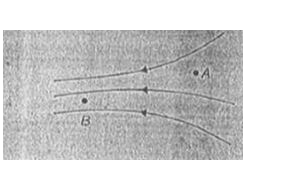 APositiveBNegativeCZeroDNone of these
APositiveBNegativeCZeroDNone of these
Fig (a) and (b) show the field lines of a single positive and negative charges respectively .
Give the signs of the potential difference : VP−VQ,VB−VA

View SolutionFigures (a) and (b) show the field lines of a positive and negative point charge respectively

(a) Give the signs of the potential difference VP−VQ,VB–VA.
(b) Give the sign of the potential energy difference of a small negative charge between the points Q and P, A and B.
(c) Give the sign of the work done by the field in moving a small positive charge from Q to P.
(d) Give the sign of the work done by the external agency in moving a small negative charge from B to A.
(e) Does the kinetic energy of a small negative charge increase or decrease in going from B to A?
View SolutionFig (a) and (b) show the field lines of a single positive and negative charges respectively .
Give the sign of the potential energy difference of a small negative charge between the points Q and P , A and B .
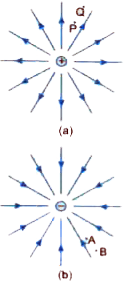
View SolutionConsider
 .
.
The potential difference VA−VB is.
View SolutionFig (a) and (b) show the field lines of a single positive and negative charges respectively .
Give the sign of the work done by the field in moving a small positive charge from Q to P .
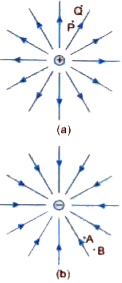
View SolutionIn figure two points A and B are located in a region of electric field . The potential difference VB−VA is

View SolutionResistances of 6Ω each are connected in the manner shown in the following figure. The potential difference Vp−Vq is

View Solution
